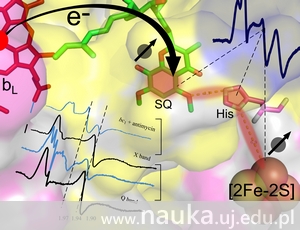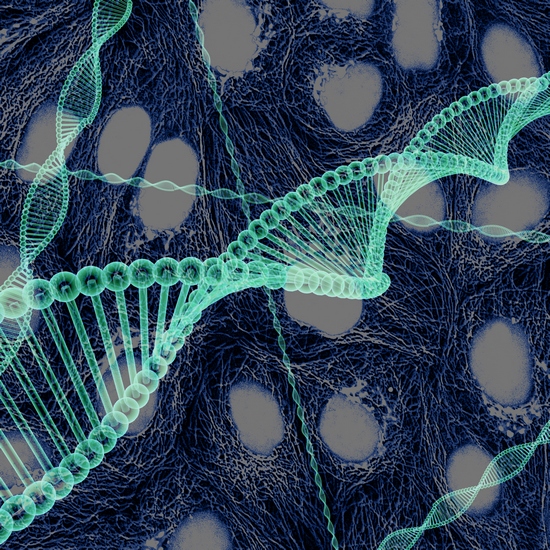
Jagiellonian University researchers show how proteins that are crucial for energy transfer are protected against adverse side reactions. The discovered mechanism functions in both animal and plant cells.
An article shedding new light on the functioning of proteins of the cytochrome bc1 complex was published in the Proceedings of the National Academy of Sciences (PNAS). According to researchers from the Department of Molecular Physics of the JU Faculty of Biochemistry, Biophysics and Biotechnology, these proteins function as molecular engines, by taking part in transforming solar energy (in plant cells) or energy stored in food (in animal cells) into a universal cellular energy carrier – ATP - Adenosine triphosphate, which is used to fuel life processes.
How does it work?
Such functioning of the aforementioned proteins is possible thanks to the reactions of transmitting an electron between subsequent elements of a complex protein chain. Conditions in a living cell constantly change, and hence the pace of electron movement along the chain should be adjusted accordingly. Of particular danger are the moments of standstill (e.g. when the need for energy rapidly decreases), during which the electrons could engage in side reactions that are energetically adverse, or even harmful, such as the formation of free radicals in the transfer of a single electron to oxygen.

Using advanced spectroscopy methods, JU researchers detected a new molecular state, which keeps the electron in a safe form that does not react with oxygen when the aforementioned “inhibition” occurs. This can take as long as several seconds, which, compared to other micro- and millisecond-reactions is a very long time. At the same time, while in that state, an electron remains ready to “jump” to subsequent parts of the chain as soon as it becomes “unblocked”.
The paper published in PNAS shows that the discussed meta-stable state occurs in both animal and plant cells. It turns out that it happens much more frequently in the latter, which may be related to the higher oxygen concentration in plant cells. Such situation had not been considered in any of the models previously suggested for this group of proteins. Thus, the researchers present a possible mechanism that protects proteins against harmful side effects which can occur when oxygen is available. This also demonstrates the part of the mechanism that can contribute to the proteins’ amazing effectiveness.
The article in PNAS was authored by Marcin Sarewicz, Łukasz Bujnowicz (joint co-authorship) and Artur Osyczka (corresponding author) from the Jagiellonian University Department of Molecular Biophysics, as well as Satarupa Bhaduri, Sandeep K. Singh and William A. Cramer from the Purdue University in the United States.
The original text is available on the website: www.nauka.uj.edu.pl.





